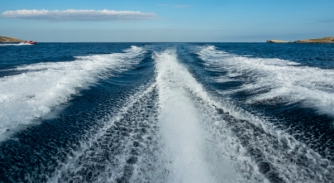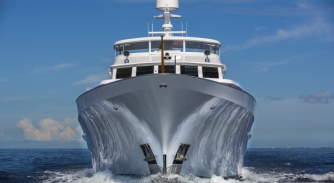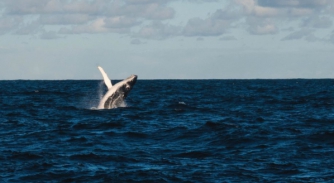Is carbon offsetting all it’s cracked up to be?
Our Sustainability Editor explores a new direct air-capture technology and puts the current state of the carbon offsetting industry under the microscope…
It is claimed that a new direct-air capture technology will significantly increase the amount of carbon dioxide that can be removed from the atmosphere. Here, we investigate the circumstances around this new technology and other carbon offsetting initiatives in the voluntary carbon markets, including the forestry projects marked by scandal in 2023.
Climeworks, a leading direct air-carbon capture (DAC) company, has recently announced its latest technology, Generation 3, which will reportedly enable it to significantly expand the amount of carbon dioxide it can collect from the air. When its second site became operational in Iceland in May this year, it became the largest DAC plant globally expanding the company’s total capacity to 40,000 tons of CO2 annually. This was a large jump from their first DAC plant in Switzerland, capable of capturing only hundreds of tons of CO2. The company states that this new technology and the next plant to utilise it, to be built in Louisiana, USA, will increase this capacity to several million tons per year by 2030, with an even more ambitious target of operating multiple sites to capture billions of tons of carbon by 2050.
Generation 3 will facilitate this accelerated development through a number of improvements, mainly speeding up the time to capture and release CO2 by a factor of two by increasing surface contact with CO2, and new filter materials which consume half the energy of previous versions. These new developments should allow for the cost of net removal to halve in 2030 compared to costs today.
Some of the costs of these removals will be covered by carbon credits available to be purchased to offset the carbon footprint of different entities.
The world of carbon offsetting is still controversial, not helped by the periodic scandals that arise concerning the effectiveness and veracity of carbon credits. For example, in January 2023, The Guardian newspaper, the German weekly Die Zeit and SourceMaterial, a non-profit investigative journalism organisation, claimed that about 90 per cent of offsetting giant Verra’s rainforest-based carbon offsets purchased at that time did not lead to any carbon removal and were ‘phantom’ credits. This scandal led to businesses such as Shell withdrawing from plans to invest in offsets to combat their emissions.
In response, former Verra CEO David Antonioli mentioned frameworks to be used to improve the integrity of both the supply and demand within the voluntary carbon markets. One is The Integrity Council for Voluntary Carbon Markets, an independent governance body set up in 2021. Its main activity is assessing carbon-crediting programmess and methodology types against the Core Carbon Principles (CCPs), and engaging with stakeholders and using this to ensure projects remain ambitious.
Another is the Voluntary Carbon Markets Integrity Initiative also launched in 2021, which created the Claims Code of Practice, a rulebook on how companies can make voluntary use of carbon credits as part of credible, science-aligned net-zero decarbonisation pathways, as well as providing guidance for countries to engage in high-integrity voluntary carbon markets in support of national climate and economic prosperity.
The development of these bodies should address the confusion over credits by bringing clarity about which credits can be used for certain corporate claims.
The EU is now taking action to combat some of the controversy around carbon offsetting
by developing its own carbon-removal framework.
Of course, forestry projects are only a small portion of the carbon-reduction projects authorised to issue carbon credits. The effectiveness of other technologies to reduce carbon emissions, such as renewable energy power projects, is less questionable.
That said, many NGOs and other organisations and individuals decry carbon offsetting, arguing that instead of paying to negate emissions, funds should go towards preventing greenhouse-gas (GHG) emissions from entering the atmosphere in the first place through business model overhauls and moving away from economies/systems reliant on the burning of fossil fuels.
Perhaps the two options can be actioned side by side.
Carbon offsetting has been used as a viable scheme to counterbalance a company’s or individual’s carbon emissions since its origin, under the United Nations’ Framework for the Convention of Climate Change (UNFCCC), in 1995. The EU is now taking action to combat some of the controversy around carbon offsetting by developing its own carbon-removal framework.
Although in the early stages of development, the current plan is for the new voluntary EU carbon-removal certification framework to cover and certify qualifying permanent carbon storage (defined as storing carbon for at least 35 years) through industrial technology, carbon storage in long-lasting products, as well as carbon farming that cut emissions from agricultural soils, and livestock methane-emissions reduction, which must continue for at least five years to be certified by their framework.
The uncertainty as to the usefulness of offsets in the efforts to combat climate change has been recently exemplified by the slightly left-field announcement from the Science Based Targets initiative (SBTi) board of trustees, saying it will consider recognising carbon credits to Scope 3 emissions from their supply chains, an approach some scientists have warned could jeopardise the fight against global warming.
SBTi is a corporate climate action organisation that assists in the sustainable development of companies and financial institutions by developing standards, tools and guidance which allow companies to set GHG emissions reductions targets in line with what is needed to keep global heating below catastrophic levels and reach net-zero by 2050 at latest. Many trust the organisation as a source of verified advice and guidance on how best to reduce GHG emissions.
SBTi’s position has long been that companies should prioritise reducing emissions across their whole supply chain and only use credits to offset the tiny amount that is impossible to cut. However, this latest statement is different and in contrast to the view of many others within the organisation who are waiting for their minds to be potentially changed from the organisation’s initial stance because of a draft analysis that is expected to be published by July. It will analyse how different tools, including carbon credits, can be “used responsibly, with the right guardrails and limits”.
However, the more positive view towards offsetting within the organisation is best exemplified by María Mendiluce from We Mean Business, which is represented on the SBTi board, who wrote in a recent op-ed that “Climate change is accelerating and we do not have the luxury of time to ignore any option that will speed up progress. We need new tools to reduce emissions now.”
This is echoed by Rachel Goult, managing director of Yacht Carbon Offset Limited: “It’s better to do something today and at the same time work on those initiatives to improve footprint going forward, rather than striving for perfection and ending up not taking any action.”
Yacht Carbon Offset works with the superyacht industry to counterbalance the emissions associated with a superyacht’s activities for an agreed-upon scope of operations, for example a charter or a crossing, or annual operations. The company welcomes more regulation, such as the EU framework, with Goult hoping that it will allow for a light to be shone on the industry, resulting in a more trustworthy system.
Goult explains that last year’s Verra scandal hasn’t affected Yacht Carbon Offset as the company already avoided forest-based credits, due to the difficulty in validating the impact of these type of credits. Instead, Yacht Carbon Offset’s stringent project-selection process means that the majority of the projects it supports to complete its clients’ offsets are renewable energy power projects. Such projects have already been developed and are generating power prior to credit issuance. This means that the quantity of power produced, and hence the power not being generated using fossil fuels, is known. This performance underpins the quantity of carbon credit that the project can issue.
In this case, Goult clarified that the cash flow generated by the sale of carbon credits will be used to service the financing, along with other income, such as the sale of power generated by the project. It may also be used to cover staff salaries and other operational costs.
Yacht Carbon Offset also offers its clients carbon credits that fund the conservation of existing mangrove forests and the expansion of new ones. Goult describes these credits as blue carbon credits, asserting that these are “extremely important to the health of the sea as they store ten times more carbon than trees, mostly in the roots below the water surface within the seabed, preventing carbon leakage, whilst providing other ecological benefits such as coastline ecosystem protection.”
It is frequently the captains who push for the offsetting of the yacht’s activities rather than owners.
This highlights a potential disconnect between yacht owners and crew concerning the environment
and reducing the yacht’s environmental impact.
Goult describes the behaviour surrounding the use of credits within the superyacht industry, explaining that the main difference for Yacht Carbon Offset’s service offering compared to other brokers is the transparency surrounding both the process of calculating the footprint, as well as the project selection for the offsetting. Yacht Carbon Offset’s process is certified to ISO 9001 by Lloyd’s Register Quality Assurance (LRQA). Goult emphasised that the company uses only carbon credits verified by trustworthy international registries – mainly Verra, Gold Standard and Plan Vivo, which employ a rigorous methodology and third-party auditors.
The projects supported by Yacht Carbon Offset are all based in developing countries and are primarily in regions frequented by its yachting clients, such as in the Caribbean and in the proximity of the Mediterranean. This is one positive aspect of offsetting often highlighted by its supporters: accelerating sustainable development in less wealthy nations.
Goult also describes the profile of its main clients within the superyacht industry who offset their activities, explaining that it is frequently the captains who push for the offsetting of the yacht’s activities rather than owners. This highlights a potential disconnect between yacht owners and crew concerning the environment and reducing the yacht’s environmental impact. In Goult’s option, many more captains would action a carbon-offsetting programme, but are held back due to complicated decision-making chains involving yacht management companies and owners. However, she also mentions that some yacht management companies positively promote the action of carbon offsetting, adopting opt-out measures where yachts are automatically offsetting through Yacht Carbon Offset unless they choose not to participate.
The use of carbon offsets in the superyacht sector could perhaps be one of the best examples for the naysayers who say that it is being used as a permit to keep polluting rather than to address actual emissions reductions. However, Goult gives details of the many different actions yacht clients are taking on board to first lower their carbon footprint to a minimum, prior to employing carbon offsetting to counterbalance the unavoidable emissions. Such initiatives, which are often determined by the captain, include operating engines and generators at their most efficient (within the limitation of certain operational demands), as well as the use of biofuels.
Increasingly, Yacht Carbon Offset clients are charterers. Goult shared an enlightening anecdote from a charterer citing the partner of a potential charter client who was not willing to sign-up for a yacht charter unless the journey was offset. This is a telling insight into the consciousness of some yacht users as climate awareness increases.
Despite this, environmental activists would probably still say that superyachts shouldn’t exist due to their emissions being entirely unnecessary and avoidable. The more reasonable take is that superyachts are here to stay, and as such we should treat them like any other emitting activity, and follow the initial guidance from the SBTI to reduce their emissions as much as possible and offset the remaining unavoidable emissions. Even Goult admits, “We’re never going to claim the superyacht sector is an eco-holiday; they are huge vessels using up millions of litres of fuel, there’s no getting away from that, although there are some actions to take.”
Goult is keen to encourage people to take action today to offset inevitable emissions, while simultaneously strategising and working to reduce their future footprint, emphasising that it doesn’t have to be an either-or situation and that multiple tools can be used to combat negative impact.
2021 research by McKinsey & Company estimates that the demand of the voluntary carbon market will increase from a 2020 baseline by a factor of 15 by 2030 and a factor of 100 by 2050. Meanwhile, in 2023 Bloomberg Research estimated that supply could increased 60-fold, depending on how carbon-removal and nature-based solutions scale.
These predictions suggest that despite the uncertainty surrounding the voluntary carbon market and its veracity, it will still exist and even grow in the future to meet demand as other net-zero deadlines loom.
Both prove that the voluntary carbon market and use of carbon offsets are here to stay for the foreseeable future, due to the advantages many still gain from their use, and that offsetting will remain available in the toolkit of different actions that can be taken. Given this, as is common with many other environmental strategies, there needs to be awareness surrounding the potential pitfalls around its use to generate the most benefits through proper utilisation. Hopefully, regulation and further clarity and transparency surrounding the voluntary carbon markets will also facilitate this improved impact.
NEW: Sign up for SuperyachtNewsweek!
Get the latest weekly news, in-depth reports, intelligence, and strategic insights, delivered directly from The Superyacht Group's editors and market analysts.
Stay at the forefront of the superyacht industry with SuperyachtNewsweek
Click here to become part of The Superyacht Group community, and join us in our mission to make this industry accessible to all, and prosperous for the long-term. We are offering access to the superyacht industry’s most comprehensive and longstanding archive of business-critical information, as well as a comprehensive, real-time superyacht fleet database, for just £10 per month, because we are One Industry with One Mission. Sign up here.
Related news

New EU directive to increase corporate responsibility
The latest in corporate-justice-related European directives has been agreed, affecting business operations and their negative social and environmental impacts
Business

Carbon pricing explained
Carbon tax is a way to pay for emissions, but what is its future within the maritime and superyacht sectors?
Crew

Are yards doing the hard yards?
Are new-build shipyards doing enough to improve their in-house sustainability processes as the clock ticks down to the looming deadline of 2030?
Crew

AkzoNobel receives Sustainable Solution verification from WRF
The accolade for the firm’s Awlgrip HDT marks the first high-performance yacht topcoat to receive the title
Crew

The blue carbon investment
Last year was the hottest on record for the world’s oceans, so how can blue carbon initiatives from the superyacht community help protect them?
Opinion
Related news
New EU directive to increase corporate responsibility
11 months ago
Carbon pricing explained
1 year ago
Are yards doing the hard yards?
1 year ago
The blue carbon investment
1 year ago
NEW: Sign up for
SuperyachtNewsweek!
Get the latest weekly news, in-depth reports, intelligence, and strategic insights, delivered directly from The Superyacht Group's editors and market analysts.
Stay at the forefront of the superyacht industry with SuperyachtNewsweek



